When we recently wrote our in-depth article on Peak ATP, we came to a conclusion that we need more stimulant-free pre-workout supplements with the ingredient inside!
We asked, and a company named NatureCity answered the call.
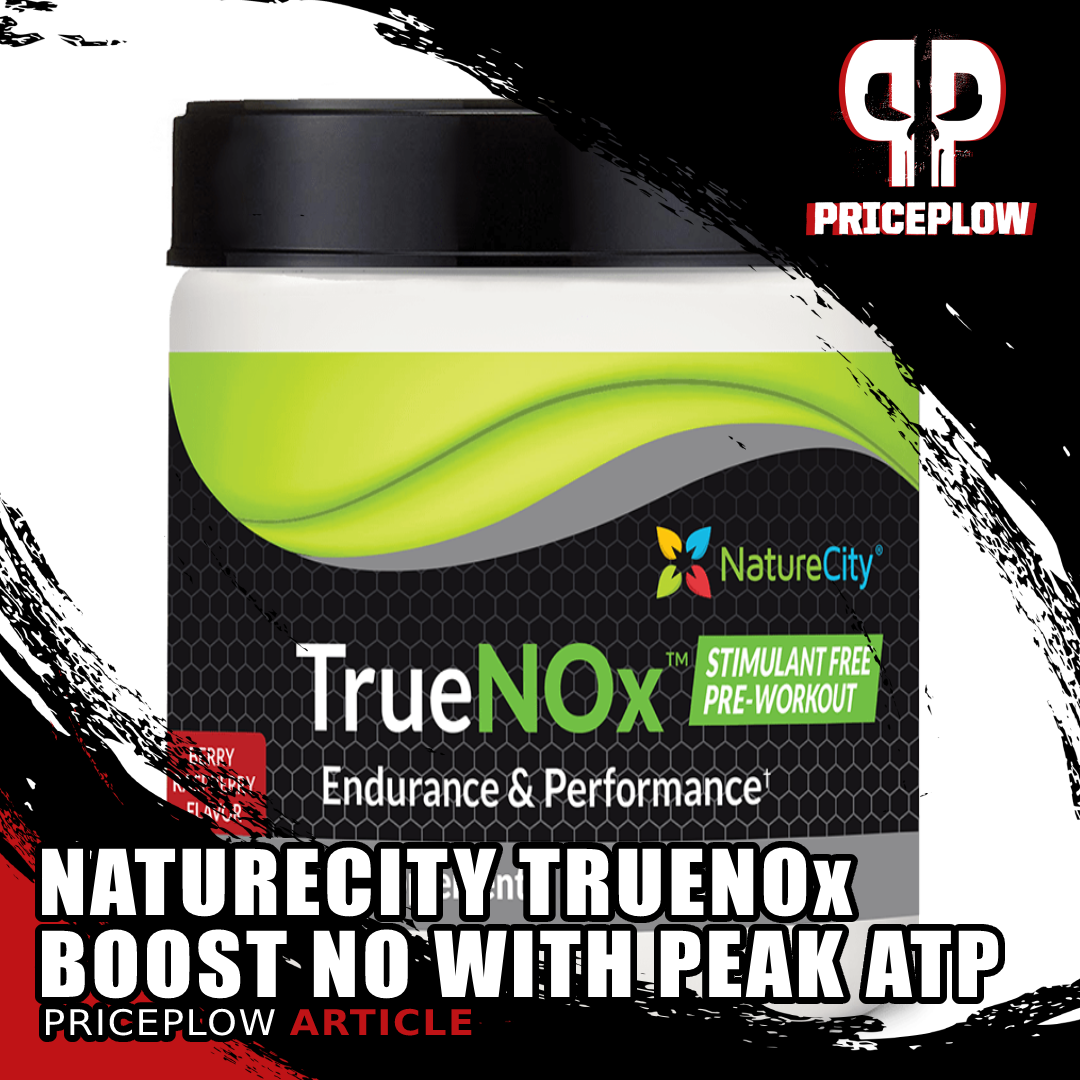
We asked for a stim-free nitric oxide boosting pre-workout supplement with Peak ATP, and we got it! NatureCity TrueNOx brings a 100% naturally-flavored, sweetened, and colored product with a clinically-verified dose of 400 milligrams of Peak ATP and far more.
So today we're going to talk about NatureCity's TrueNOx, an incredible naturally-flavored, naturally-sweetened stimulant-free nitric oxide (NO) boosting formula with a clinically-studied 400 milligram dose of Peak ATP, as we requested, with some other powerful ingredients like Nitrosigine and amla to push nitric oxide production to the next level.
TrueNOx's Peak ATP in a Stimulant-Free Pre-Workout
Why are we so excited here? Peak ATP's made from highly-stable disodium ATP -- replenishing our body's ATP (cellular energy) stores while we train -- but it actually works through increased blood flow! Yet most dietary supplement formulators only consider the energy aspect, mostly putting it into stimulant-based supplements or capsules.
Once we realized that, we understood that there was a gap in the stim-free pre-workout "pump" space. And TrueNOx fills it.
This is a great opportunity to explore the connection between cellular energy production and NO-mediated vasodilation. There's a lot more going on here than most realize, and TrueNOx is on to something that few brands in the sports nutrition niche have figured out.
One of the more surprising facts we'll discuss is that increases in extracellular ATP cause significant improvements in cardiovascular function. We hear a lot about how ATP can benefit muscular power and athletic performance, but far less about its effect on the cardiovascular system.
It's another great example of how cellular energy availability affects every aspect of human health. So let's get into the details, but first, check the PricePlow news and deals:
NatureCity TrueNOx – Deals and Price Drop Alerts
Get Price Alerts
No spam, no scams.
Disclosure: PricePlow relies on pricing from stores with which we have a business relationship. We work hard to keep pricing current, but you may find a better offer.
Posts are sponsored in part by the retailers and/or brands listed on this page.
This area is reserved for Team PricePlow's upcoming videos.
Subscribe to our channel and sign up for notifications so you catch it when it goes live!
Nitric Oxide – More than Just "Muscle Pump" Supplements
Nitric oxide boosting ingredients are incredibly common, forming the backbone of pretty much every product in one of the industry's most popular categories, pre-workout supplement. But even though almost all serious supplement users take some kind of daily NO booster, there's very little discussion of what it does for you beyond the superficial fact that NO can give you a nice pump.
Vasodilation for greater blood flow
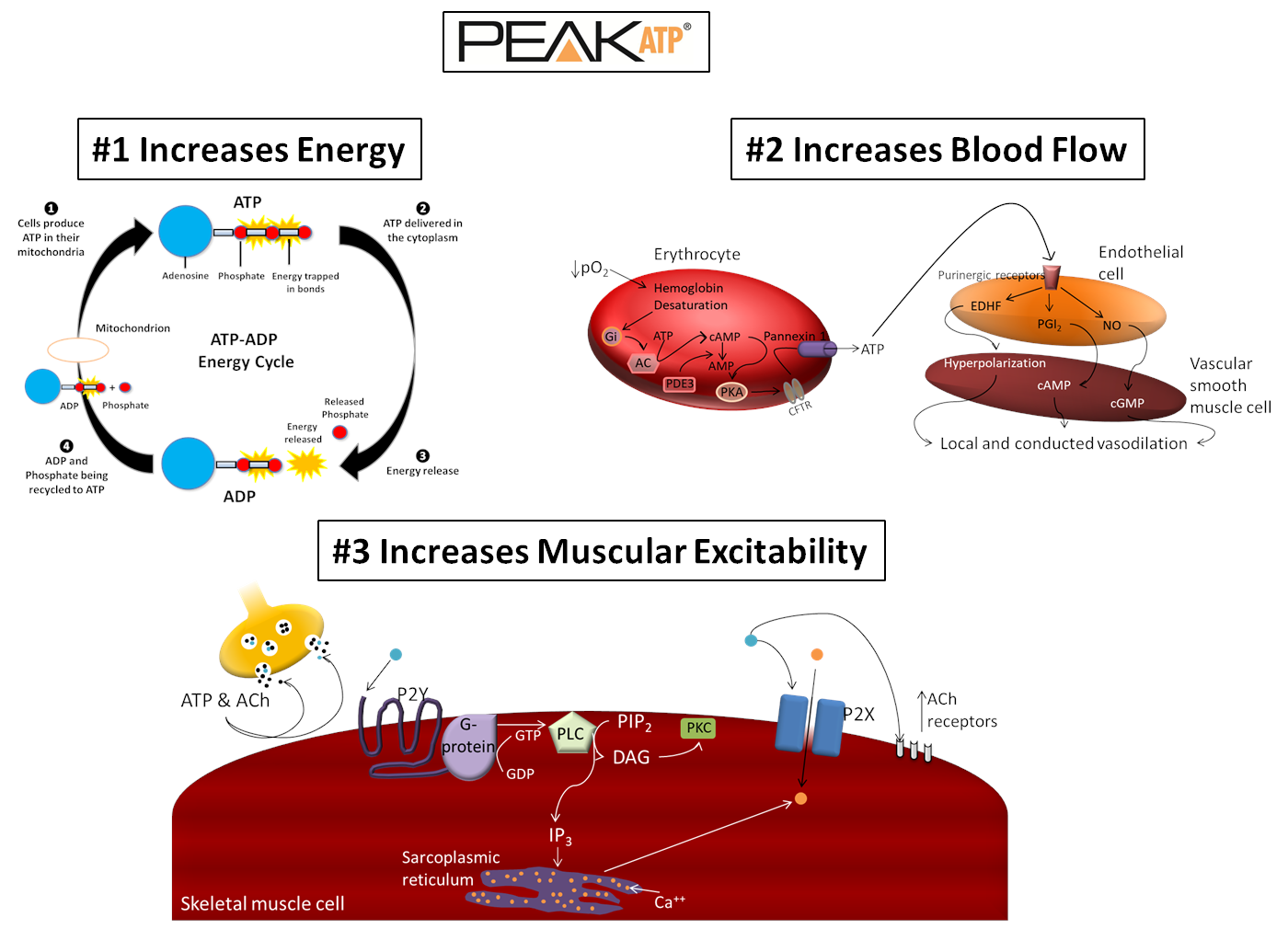
The PEAK ATP Triple Mechanism of Action, and much of it revolves around the increase in blood flow it supports. Modified image courtesy of TSI Group and PricePlow
Most of us know that NO leads to vasodilation (a mechanism that causes arteries to relax), which decreases cardiovascular resistance and relieves strain on your heart. The larger arterial diameter helps reducer blood pressure and heart rate, which benefits athletic performance and recovery, thanks to improved circulation.[1] And, in the long run, it can even reduce serious health risks.[2]
This vasodilation effect is usually what we get excited about with these stimulant-free pre-workout supplements -- the improved blood flow it brings leads to tremendous benefits -- and companies are more and more looking to replace heavy ingredients like citrulline to boost NO. More than just an energy substrate, Peak ATP is one of them.
But before getting into ingredients like Peak ATP, there's even more that improved nitric oxide may be able to do:
Mitochondrial improvements and more
As an example, in a 2016 study, researchers claimed that an increase in NO production from a nitric oxide boosting ingredient was the main mechanism behind the reversal of mitochondrial damage in mice.[3]
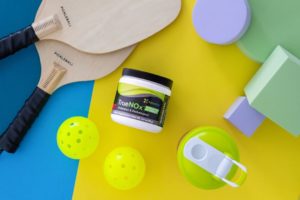
This is a startling fact since mitochondria are of fundamental importance to human health. Mitochondria affect so many different aspects of health that, in recent years, mitochondrial function has become a target of anti-aging research.[4]
Other studies have found that NO production is usually impaired in people who are insulin resistant,[5] which isn't totally surprising. What may be surprising to most is that restoring NO production, with NO-boosting supplements like L-arginine, has been shown to improve insulin sensitivity and glycemic control.[6,7]
Point being, there's a lot more going on here than "pumps" and "blood flow". We can chase greater health overall. So let's dig into how NatureCity is capturing this with TrueNOx:
Ingredients
In a single 1-scoop (4.8 gram) serving of TrueNOx, you get the following:
-
Nitrosigine (Inositol-Stabilized Arginine Silicate) – 1,500 mg
This TrueNOx formula is basically a wish-list of ingredients that work to naturally increase nitric oxide levels without sitting heavy in the stomach.
NatureCity kicks off TrueNOx with Nutrition21's Nitrosigine, one of the most sophisticated nitric-oxide boosting ingredients on the supplement market today.
Since, as we said in the introduction, one of the goals of this formula is to help drive the production of NO, it makes total sense for NatureCity to lead with an arginine ingredient, since arginine is nitric oxide's precursor. By raising arginine blood levels, Nitrosigine gives your body the substrate it needs for eNOS-mediated NO production.
So why not just use regular L-arginine? Well, the supplement industry tried that for a while, but eventually researchers figured out that the oral bioavailability of generic arginine is pretty bad.[8-11]
That's how Nitrosigine was born. Nutrition21 set out to build a better arginine, one that's absorbed more effectively by the human body.
Readers who've been following the industry for a while probably know that citrulline, an arginine precursor, is commonly used to get around the arginine-bioavailability dilemma.[12] The problem with citrulline is that you need pretty big doses to achieve maximal effect: Gains on additional citrulline intake don't really diminish until somewhere around the 10-grams-daily mark.[13,14] With Nitrosigine, we can achieve similar effect sizes at much smaller doses.
Nitrosigine's effects on NO and circulation
In fact, one study found that a 1.5-gram dose of Nitrosigine increased flow-mediated dilation (FMD), a measure of arterial blood flow, by 31%, while an enormous 8-gram dose of citrulline malate (CM) increased it by 34%.[15] In other words, Nitrosigine yielded approximately the same effect size with less than 25% of the dose required by CM... and if you really look at the data, Nitrosigine was a bit better, too!
Not only does Nitrosigine immediately boost N.O. levels, it keeps them elevated for a period of up to 2 weeks!
So what is Nitrosigine? It's a trademarked and patented complex of arginine, inositol, and potassium silicate, abbreviated in research to ASI.[16]
The reason for Nitrosigine's superior bioavailability is that the inositol and potassium silicate protect the arginine molecule from degradation by stomach enzymes.[17] This spares the arginine from the first pass effect because it remains intact until it reaches the intestines where its absorbed into the bloodstream.[18]
Nitrosigine is both fast-acting and long-lasting. It takes effect as soon as 30 minutes after its ingested, with effects lasting as up to six hours.[19,20]
Nitrosigine's cognitive benefits
NO boosters are usually discussed in the context of physical performance, and although this is important, we like to bring up the cognitive effects of increased NO production whenever we discuss Nitrosigine.
Cognitive recovery from exercise is something that people don't talk about much, but it's also important. We all know how debilitating it can be to push ourselves in the gym and then deal with the brain fog that follows for the rest of the day.
Fortunately, there's an awesome body of literature showing that Nitrosigine is particularly good at improving certain dimensions of cognitive performance, even compared to other NO boosters. After all, the brain is no less affected by circulation than any other organ in the body. And, in fact, the brain is especially hungry for the oxygen, ketones, and glucose that blood carries. Nitrosigine's ability to improve cerebral blood flow through NO upregulation means that it can help prevent the temporary cognitive impairment that typically follows an exhaustive workout.[22]
In healthy young men, specifically those who had not recently exercised, Nitrosigine supplementation improved multitasking.[23] Additionally, a 2021 study found that subjects taking Nitrosigine did better on a memory test than those taking a placebo.[24]
These cognitive benefits are an important part of adapting to a demanding workout regimen, and not burning out before attaining your goals. That's why we see pre-workout formulas increasingly offering some kind of nootropic support, and why we like to see Nitrosigine in TrueNOx.
-
Organic Beet Root Juice Powder – 1,000 mg
Beetroot is a great whole-food NO booster. It's rich in nitrates, which get converted into NO by the salivary glands[25-27] via the nitrate-nitrite pathway.[28,29]
A 2013 meta-analysis on the effects of nitrate supplementation found that it can have the following effects:[30]
- Improved circulation[31]
- Increased aerobic efficiency[31-34]
- Increased strength[35,36]
- Accelerated recovery[30]
- Increased cellular energy production[36-38]
Yet, as you'll see as a theme in this supplement, the ingredient brings more than just one benefit!
Metabolic benefits of beets – betalain and betanin
We all know that beets are naturally an intensely bright purple color. The chemical compounds responsible for their hue are a group of pigments called betalains, which come with a pretty impressive set of health benefits.
Because these pigments partly evolved as a way for the plant to defend itself against attacks by parasites and microorganisms, betalains have powerful anti-microbial properties that are based on betalains' ability to directly destroy the cellular membranes of microbes.[29,33]
Studies on betanin, a betalain-rich food colorant derived from beets, have found that they have powerful antioxidant and anti-inflammatory effects.[29]
These effects are so strong that betalains can actually have indirect metabolic benefits. One animal study found that when diabetic mice were given a betalain-rich extract, their high blood sugar levels dropped by an impressive 40%.[31]
Beets are also rich in quercetin, which has similar effects on glycemic control and cellular metabolism.[32] Quercetin acts partly by inhibiting the action of glucose transporter 2, thus preventing your body from absorbing ingested carbohydrates.[32]
Betalains may also prevent plaques from forming in the brains of Alzheimer's patients[34] and have been shown to inhibit the growth of cancer cells in vitro.[35]
-
Capros Amla Fruit Extract (Phyllanthus emblica) (standardized to minimum 60% tannins) – 500 mg
Amla, also known by its scientific names Phyllanthus emblica, Indian Gooseberry, and Emblica officinalis, is a fruit tree with a long history of use in Ayurvedic medicine. It's been used for millennia to treat circulatory disorders and to enhance general cardiovascular health.[37]
How amla improves arterial function by increasing NO production
Modern scientific research has largely borne this traditional wisdom out, as specific antioxidants in amla have been identified as enhancing endothelial function while inhibiting the formation of platelets,[36] which are known for their contributions to significant cardiovascular events.
In animal studies, amla has been shown to have a significant anti-hypertensive effect through its activation of endothelial nitric oxide synthase (eNOS), an enzyme responsible for producing NO inside your arteries[39] which is expressed under normal, healthy conditions.
One of the constituents at work here is gallic acid, which naturally occurs at high concentrations in amla fruit[40] and has been shown to inhibit the degradation of eNOS, thus effectively raising eNOS levels and increasing NO production.[41]
eNOS vs. iNOS – amla's localized upregulation of NO
At the same time, amla downregulates a nitric oxide synthase called inducible nitric oxide synthase (iNOS). This is generally a good thing, as iNOS is expressed during inflammation and is associated with the onset of several major diseases.[35.36]
This apparent paradox in the function of NO – in which it benefits endothelial function but also causes potentially damaging inflammation – can be resolved by understanding that eNOS is situated in endothelial cells and is responsible for regulating blood flow, whereas iNOS is situated in immune cells (like macrophages, monocytes and neutrophils),[42] and is part of an immune response.
Since NO is actually a free radical, large amounts in the wrong places are considered toxic, and iNOS generates NO in huge quantities as part of a deliberate attempt to poison pathogens that could threaten your health.[44] Unfortunately, this iNOS-driven upregulation can cause collateral damage to your body, which is why it's important to keep it under control. In other words, amla gives us more of the good nitric oxide synthase, while simultaneously decreasing our burden of bad nitric oxide synthase.
The connection between ATP, nitric oxide, eNOS and arterial function
Amla extracts are often standardized for a minimum content of low molecular weight tannins (LMWTs) that occur naturally in the amla tree. Some of these LMWTs include emblicanin-A, emblicanin-B, punigluconin, and pedunculagin.[38] The body metabolize these into urolithins A, B, C and D,[25] all of which are known to significantly improve mitochondrial function.[26]
Here at PricePlow, we're kind of obsessed with mitochondrial function because cells' mitochondria are responsible for producing adenosine triphosphate (ATP), which is the body's basic unit of energy.
If your body were an automobile, ATP would be the gasoline. It's that important.
And that will bring us to the next section, because NatureCity's going to add even more ATP to TrueNOx to further improve numerous health metrics:
-
Peak ATP (adenosine 5'-triphosphate disodium) – 400 mg
Peak ATP is a patented[45-47] ingredient made of disodium ATP sold by TSI Group. After researching its mechanism, the patents, and studies described below, it's the ingredient we wanted in a stimulant-free pre-workout supplement, and here it is with TrueNOx.
Peak ATP provides us a way to provide exogenous ATP into the system - but as we'll see, it's really the blood flow generated that leads to such great benefits.
Continuing our conversation from above, higher levels of ATP production positively correlate with improved athletic performance and overall health.[48,49]
But ATP upregulation also has a very specific effect that's relevant to the purpose of TrueNOx. Research consistently shows that increased ATP production leads to increased eNOS expression, increased NO production, and improved arterial function.[50]
To get really specific, your red blood cells, platelets, and endothelial cells release ATP in response to a variety of stimuli. This ATP then upregulates calcium within your endothelial membranes and causes the translocation of eNOS into endothelial cells, which then activates it.[50]
Or, as another study puts it:
Once released, ATP binds to purinergic (P2X and P2Y) receptors on endothelial cells. Binding results in the endothelial cells releasing nitric oxide via endothelial nitric oxide synthase, prostacyclin, and endothelium-derived hyperpolarizing factor, all 3 of which affect the smooth muscle of the vasculature via cyclic guanosine monophosphate, cyclic adenosine monophosphate, and hyperpolarization, respectively.[30]
Given the close connection between ATP and NO-driven vasodilation — a topic we just covered in the amla section — it's probably no longer a surprise to see Peak ATP, a form of exogenous ATP, closing out the TrueNOx formula.
PeakATP is another ATP enhancing compound that is comprised of a slightly different make than elevATP and needs a much higher dose to be effective.
There's a ton of great research on the effect that this specific form of supplemental ATP has on NO and circulation – some of it on generic disodium ATP, and some of it specifically on PeakATP.
-
PeakATP improves circulation in the arm
In one study, 12 college-aged males were given 400 milligrams of PeakATP daily for 12 weeks, and at various points had their blood flow through their brachial arteries. These measurements were taken immediately after the subjects had completed an arm exercise, so the idea was to see whether the PeakATP was changing their cardiovascular response to exercise.
400 mg of PEAK ATP® supplementation significantly increased blood
flow and significantly enhanced brachial artery dilation following resistance exercise.[30]As you can no doubt see from the above graph illustrating the study results, supplementation with PeakATP was found to significantly increase the vasodilatory effect of exercise. Immediately after physical activity concluded, the PeakATP group had an impressive 50% greater blood flow than the control group.[30]
-
Wilson et al. 2013 – more info on the vasodilatory effect of ATP
The practical benefit of this improvement to blood flow is ergogenic effects. Because ATP helps your body circulate blood more efficiently, your cells get oxygen and nutrients more easily, and this translates into real-world performance improvements.
That's exactly what a 2013 study in healthy young men found. In response to a structured training program, 12 weeks of disodium ATP supplementation improved whole-body strength, vertical jump power, and muscle thickness[51].
The authors of the study shed some light on why this was the case:[51]
"It has been reported that the half-life of infused ATP is less than one second, ATP is rapidly taken up and stored by erythrocytes. This rapid uptake by erythrocytes is central to its role in affecting blood flow and oxygen delivery to oxygen-depleted tissue. Specifically, there is a tight coupling between oxygen demand in skeletal muscle and increases in blood flow. Erythrocytes regulate this response by acting as "oxygen sensors". When oxygen is low in a working muscle region, the red blood cell deforms, and releases ATP. The result is vasodilation and greater blood flow to the working musculature, thereby enhancing nutrient and oxygen delivery."[51]
Peak ATP is a patented oral ATP supplement that's been shown to increase blood flow, boost muscle activation through calcium release, and help boost muscle mass, strength, and recovery. This article covers the biochemistry, mechanism, and human research in detail.
If you combine this quote with the one we provided at the end of the amla section, you get a pretty complete picture of how ATP upregulation can drive NO-mediated vasodilation.
The ATP released by erythrocytes binds to endothelial cells, triggering NO production, which in turn increases cyclic guanosine monophosphate (cGMP) and cyclic adenosine monophosphate (cAMP) activity. Both cGMP and cAMP are known to drive the process of arterial relaxation that's at the heart of vasodilation.[52]
There's far more research involved -- you can see the rest of it in our main article titled PEAK ATP: The Ultimate Guide to Disodium ATP Supplements.
However, we'll close with a 2021 review article's incredible conclusion on Disodium ATP supplementation, which gives you the breadth of health benefits this ingredient can support:[53]
The available literature on ATP disodium when provided in a dose of at least 400 mg approximately 30 min before a workout or 20–30 min before breakfast on non-exercise days provides insight into its potential to reduce fatigue (Purpura et al., 2017,[54] Rathmacher et al., 2012[55]), increase strength and power (Wilson et al., 2013[51]), improve body composition (Hirsch et al., 2017[56], Wilson et al., 2013[51]), maintain muscle health during stress (Long and Zhang, 2014,[57] Wilson et al., 2013[51]), increase recovery and reduce pain (de Freitas et al., 2018[58], Khakh and Burnstock, 2009,[59] Wilson et al., 2013[51]). Additionally, other literature indicates a role for ATP in improving cardiovascular health (Hirsch et al., 2017,[56] Ju et al., 2016,[60] Rossignol et al., 2005[61]).[53]
Now that's a lot of research on an ingredient, and it blows our minds that Peak ATP is so rarely used in stimulant-free pre-workout supplements where its multiple mechanisms of action can have such a profound effect!
-
-
Chromium [as chromium complex with Phyllanthus emblica fruit and purified shilajit (Crominex 3+)] – 400 mcg (1,143%)
Veteran supplement consumers might be surprised to see chromium in a NO-boosting formula, since chromium is usually employed as a glycemic control agent, helping keep blood glucose levels from rising too high by increasing insulin sensitivity.
As it turns out, there's actually a close connection between glycemic status and NO production. Blood glucose is a nitric oxide scavenger, meaning it can chemically de-activate NO, thus preventing NO from triggering the vasodilatory effect we want.[62]
In one animal study, using chromium supplementation to reduce blood glucose levels in hypertensive animals actually restored NO signaling, and helped the animals' arteries relax.[63]
How chromium improves glycemic control
Chromium helps improve insulin signaling by interacting with an oligopeptide called chromodulin.[64,65]
Chromodulin is responsible for activating insulin receptors that line the surface of your cells, which causes those cells to take up glucose.[66] Cellular glucose uptake is what actually brings your blood glucose levels down.
As it turns out, chromodulin works by imitating insulin itself. But it isn't just an insulin impostor – it also helps insulin do its job better, meaning there are synergistic effects between chromodulin and insulin.[67]
Chromium activates AMPK
Chromium also upregulates an enzyme called adenosine monophosphate-activated protein (AMPK)[68] through its interaction with chromodulin.[69]
Major roles AMP Kinase (AMPK) is proposed to regulate in terms of metabolism and skeletal muscle gene expression.[70]
AMPK is one of your body's metabolic master switches – it signals to your mitochondria that it's time to produce cellular energy.[71] So more AMPK activity basically means more calories burned as your cells convert glucose and fatty acids into ATP.[72]The glucose burned by your cells in this process comes from your bloodstream, meaning that increased metabolic rate via AMPK upregulation is also helping to bring your blood glucose levels down. Thus, AMPK upregulation has been shown to increase fat burning and muscle mass.[73]
In short, a very cool way to end an NO formula!
Conclusion: TrueNOx Enters the NO Game with a Grand Slam
We asked for Peak ATP in a stim-free pre-workout supplement like this, and we sure got it. Little did we know that the formulators would also include many of our other favorite ingredients as well!
Of course, we always love seeing industry heavy-hitter NO booster Nitrosigine show up, but with the added Peak ATP and amla, there's even more to this one. One thing we really appreciate about TrueNOx is its emphasis on ATP-mediated vasodilation.
We're seeing a trend in the supplement industry, across the board and in every product category, toward a recognition of ATP and cellular energy being one of the most fundamental mechanisms of action for any effect we try to get from nutritional supplements.
In our opinion, this is a great trend. ATP is unbelievably important, which is why we write about it all the time here in the PricePlow Blog. To that point, TrueNOx truly delivers.
NatureCity TrueNOx – Deals and Price Drop Alerts
Get Price Alerts
No spam, no scams.
Disclosure: PricePlow relies on pricing from stores with which we have a business relationship. We work hard to keep pricing current, but you may find a better offer.
Posts are sponsored in part by the retailers and/or brands listed on this page.
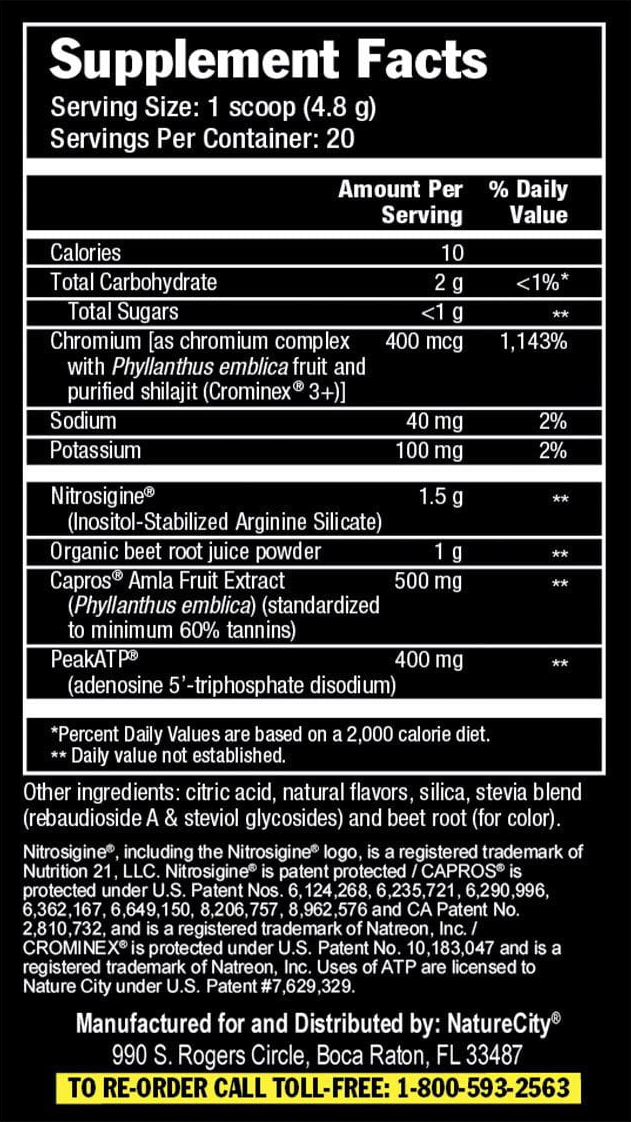
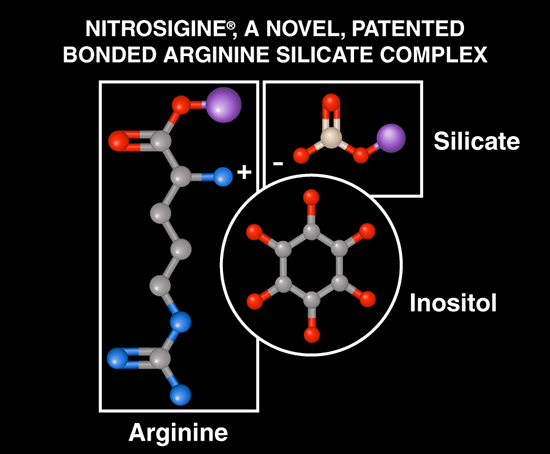
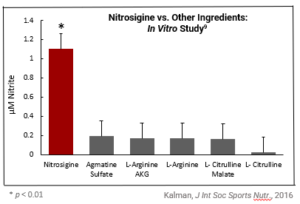
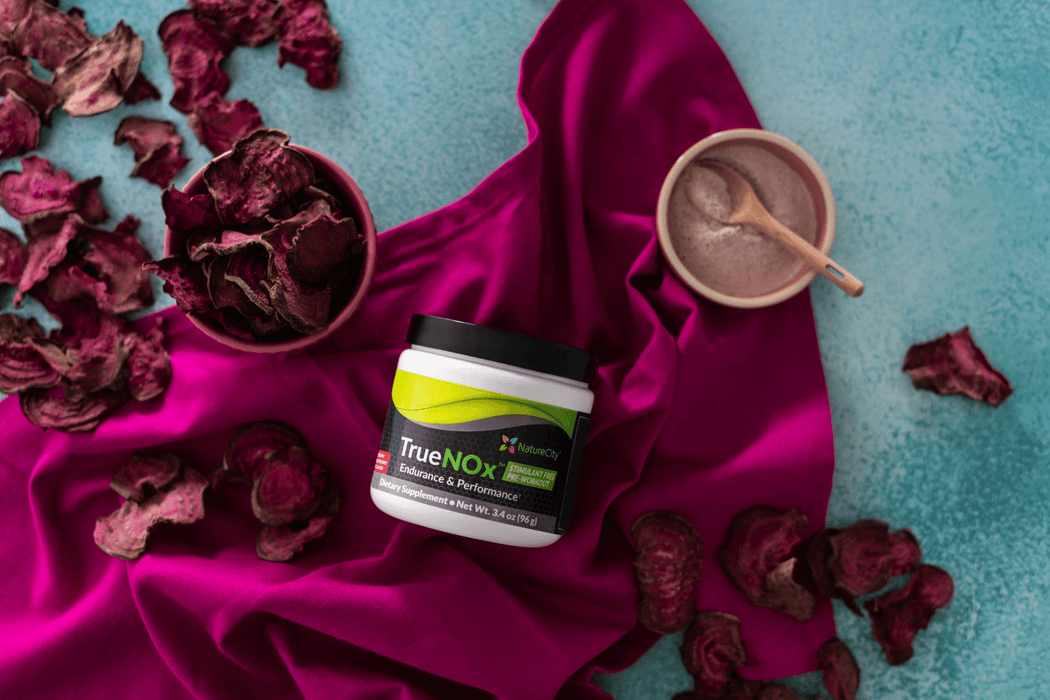
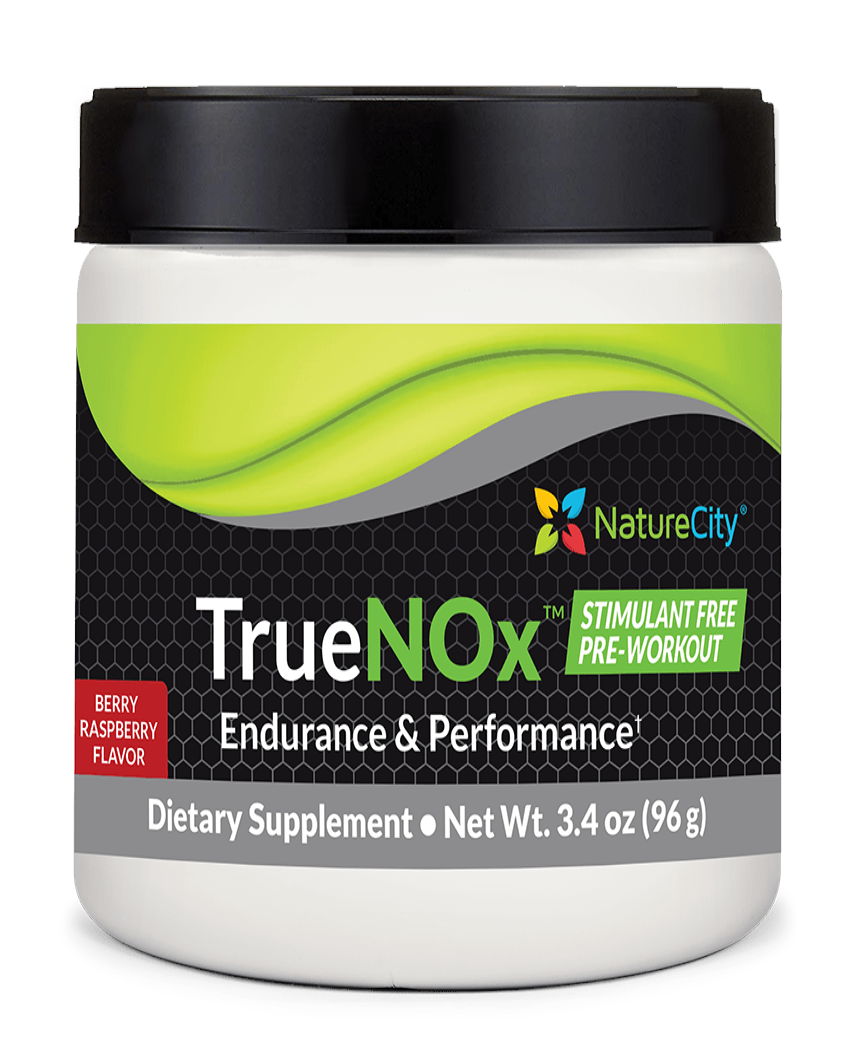
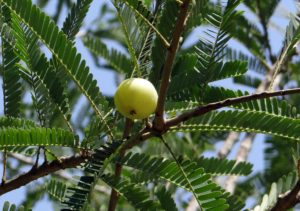

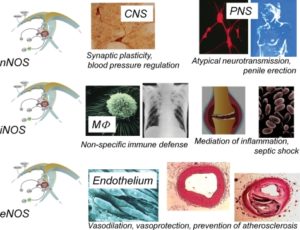
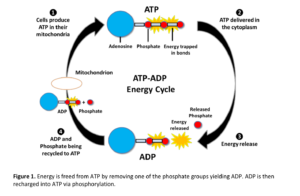

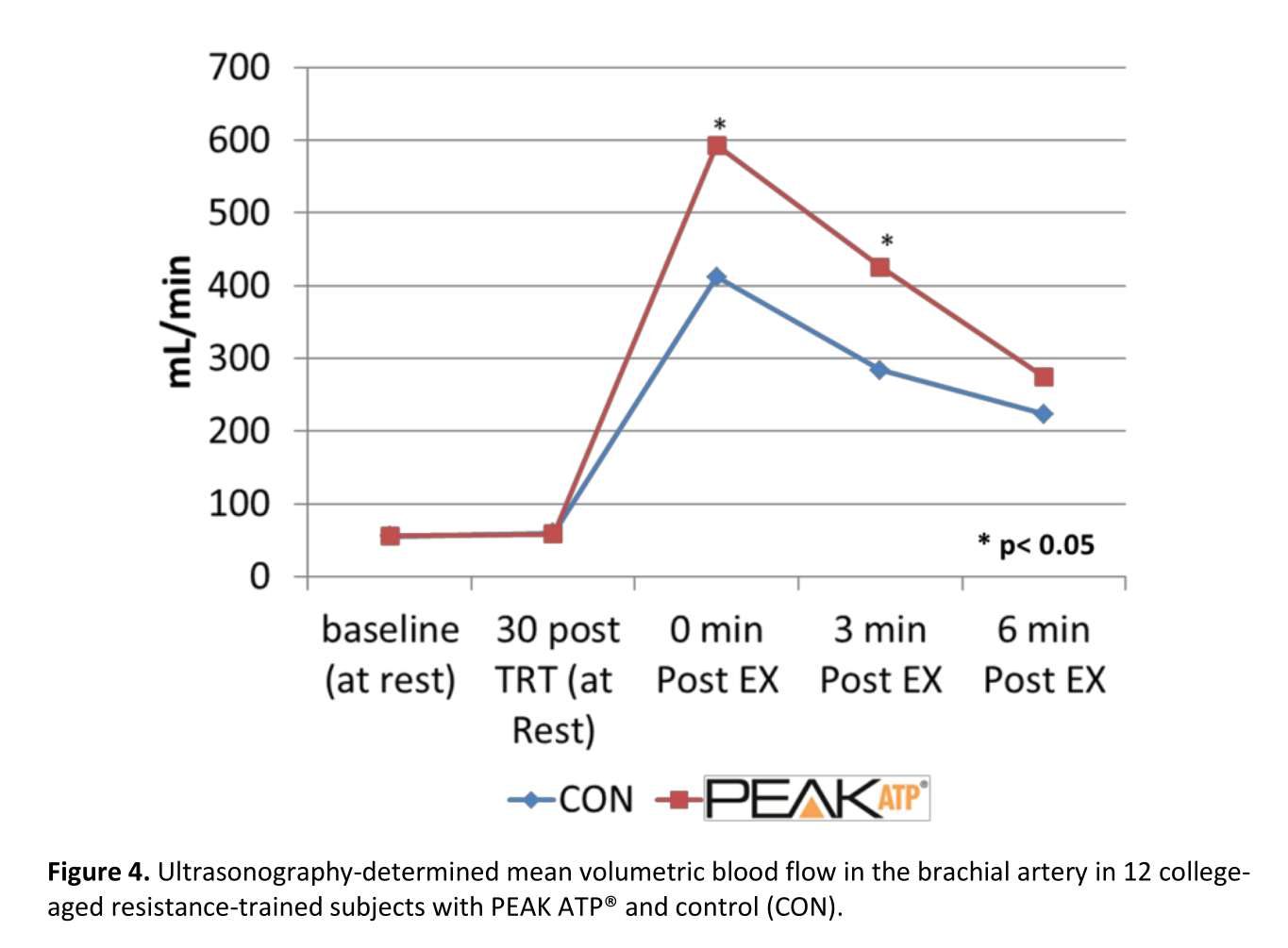
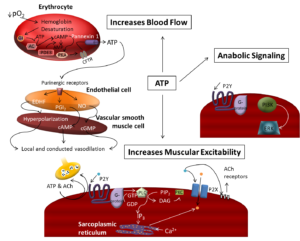
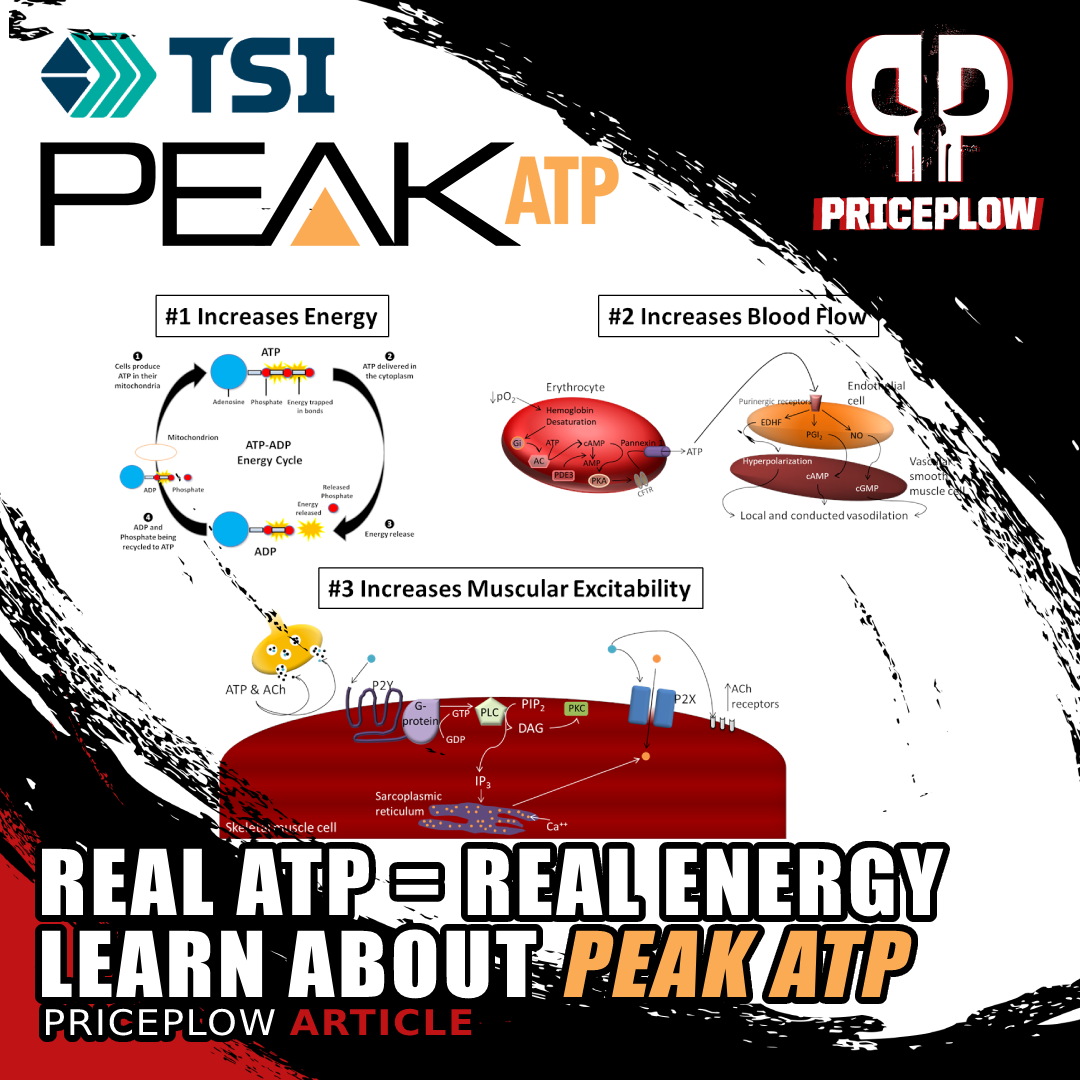

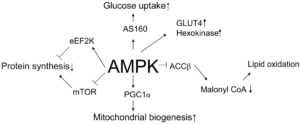
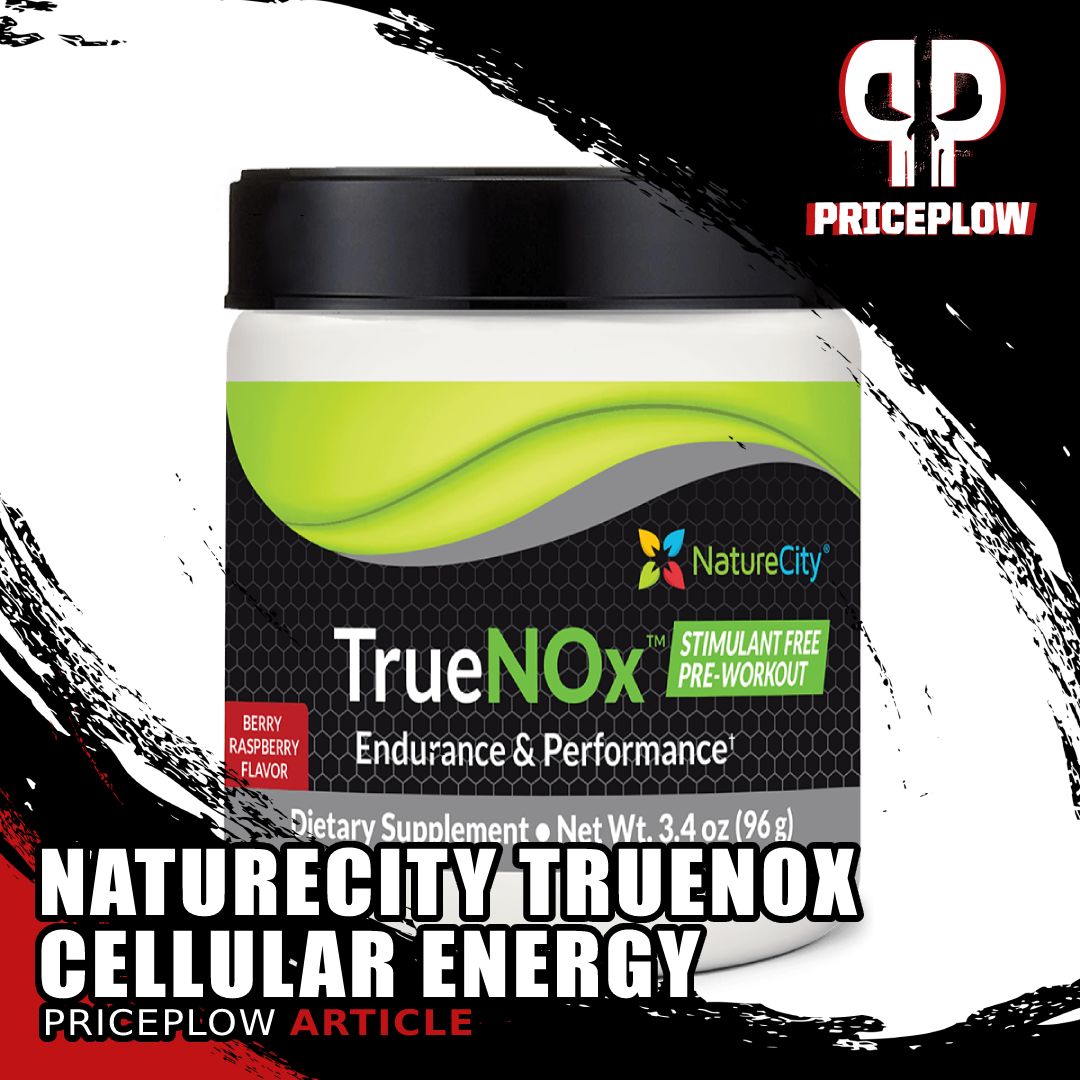


Comments and Discussion (Powered by the PricePlow Forum)